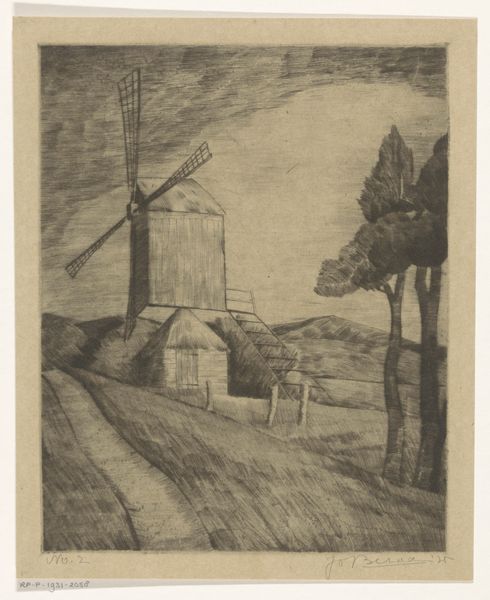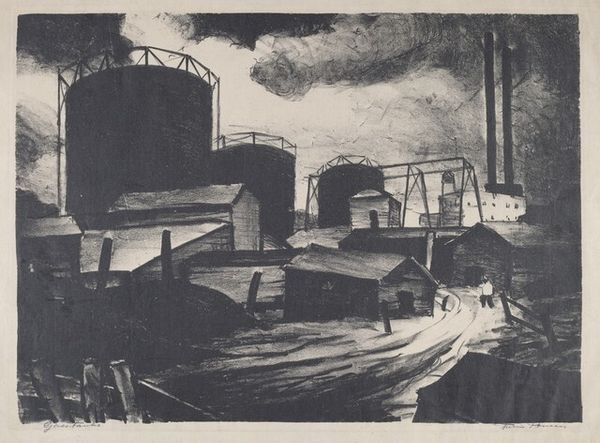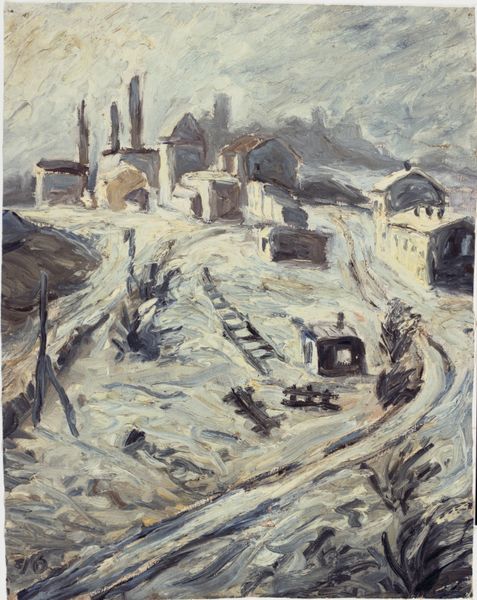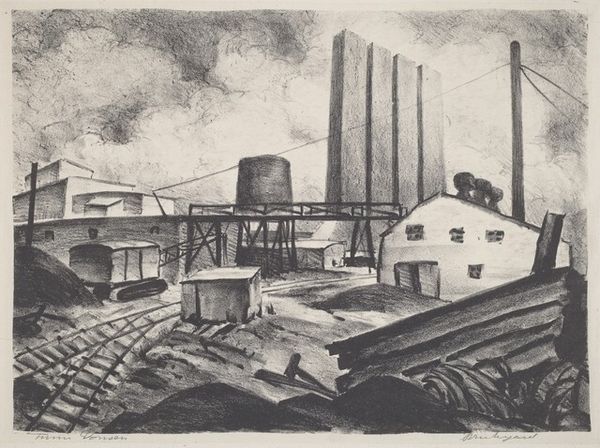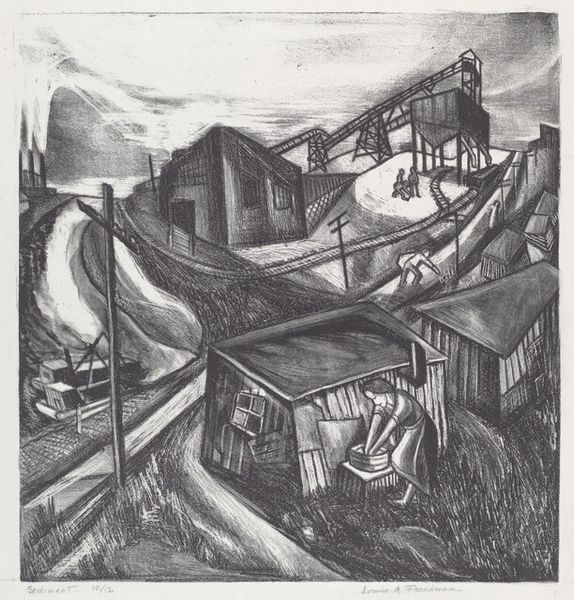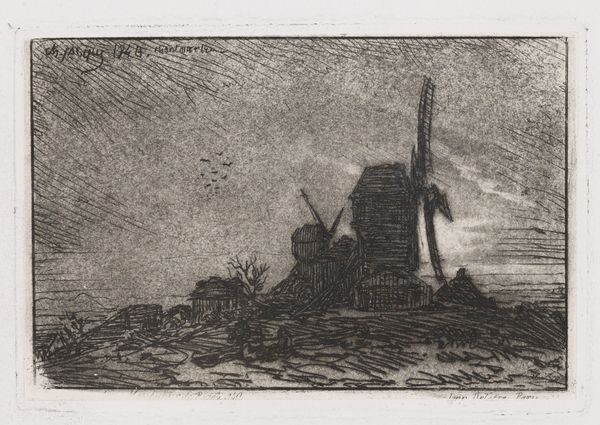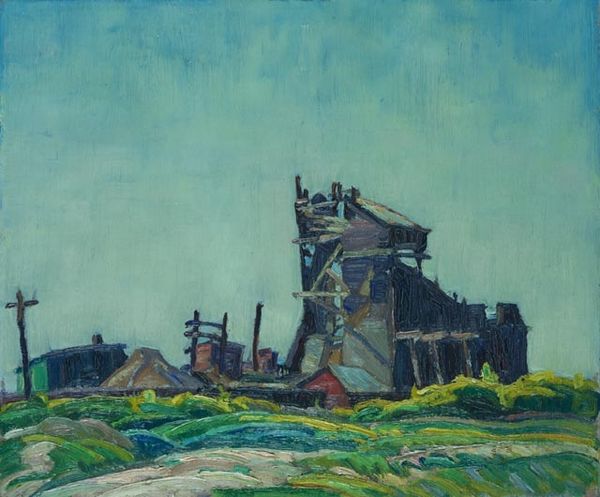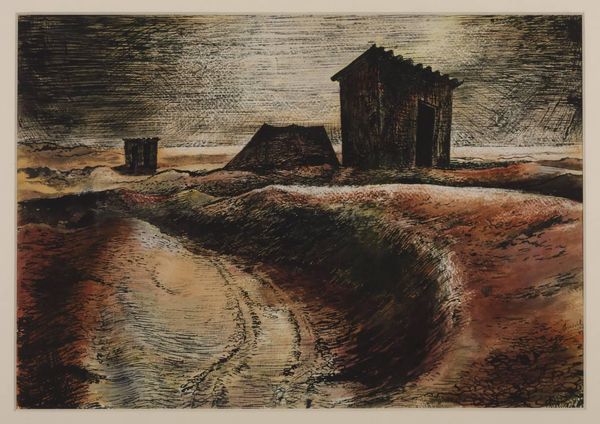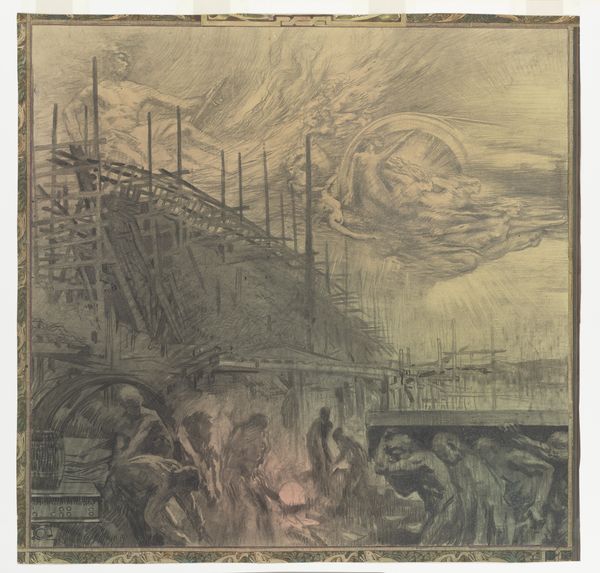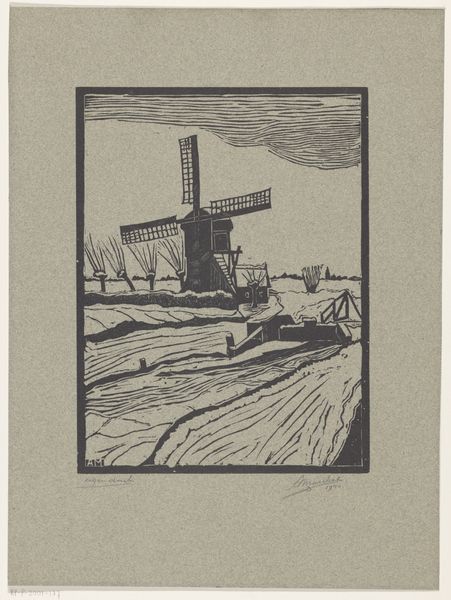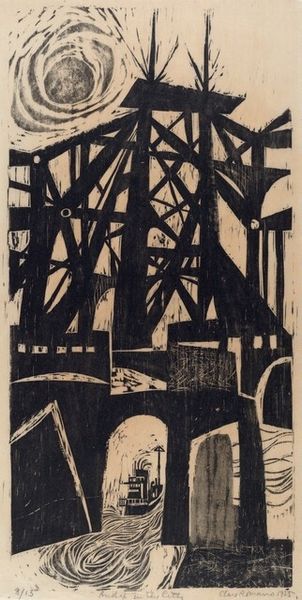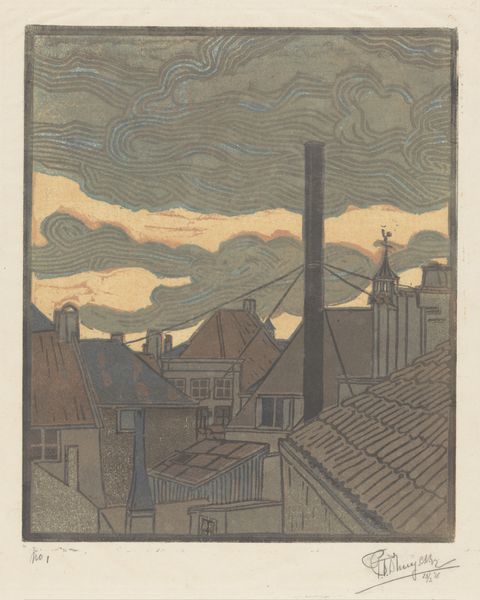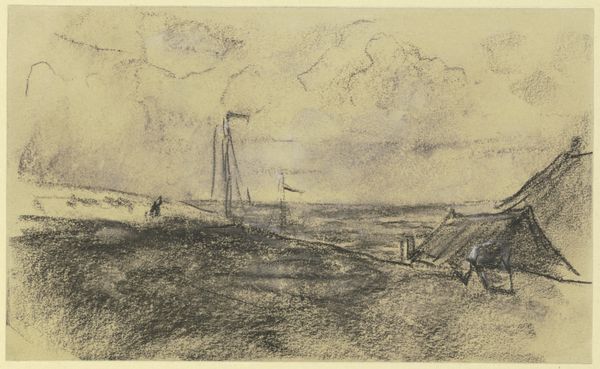
painting, oil-paint
#
painting
#
oil-paint
#
landscape
#
oil painting
#
geometric
#
expressionism
#
cityscape
Copyright: Public domain
Editor: Walter Gramatté’s "Gas Plant," painted in 1916, offers a rather bleak oil painting of a cityscape dominated by industrial architecture. There's a real sense of melancholy about it, don't you think? What do you see in this piece, particularly considering the historical context? Curator: Absolutely, the melancholy is palpable. For me, this piece screams of the pre-war anxieties of the 20th century. The imposing gas plant isn't just a functional structure; it represents the rapidly changing industrial landscape and the social disruption it brought about. How does the image of a gas plant, something vital to urban life, get transformed into an ominous figure? Editor: It’s like the hope of progress turning into a symbol of something darker, more alienating. Curator: Precisely! And think about the Expressionist style Gramatté employs. The distorted forms, the somber color palette – they all serve to amplify this feeling of unease and alienation. Is it possible that this image critiqued rapid industrialization by portraying this vital aspect of city life as monstrous? Editor: I see what you mean. I was just responding to the overall tone, but considering it as a political or social commentary… it definitely shifts my understanding. Curator: The image of the industrial world took many shapes. Consider, too, who has the privilege to shape or critique these images. Gramatté was part of a generation grappling with immense societal shifts. Perhaps these paintings, shown in galleries, initiated dialogue on modern life. What do you make of this as a public work of art? Editor: That's fascinating. It shows me that a seemingly simple landscape painting can actually hold a complex message about its time, if you delve into the socio-political elements at play. I'll certainly look at art differently now! Curator: Indeed. Examining art within its historical and social context unlocks layers of meaning that are not immediately apparent, revealing the powerful role art plays in reflecting and shaping society.
Comments
No comments
Be the first to comment and join the conversation on the ultimate creative platform.

